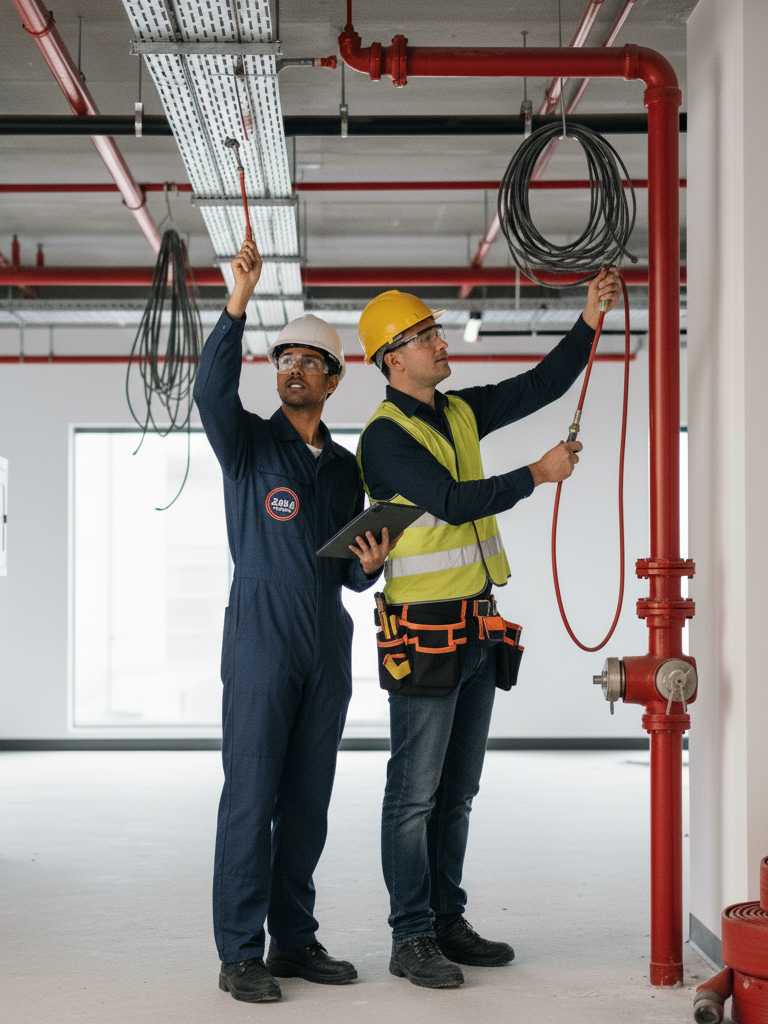Fire Safety Inspections and Maintenance Guidelines
Hydrostatic testing is a mandatory inspection that needs to be conducted either every 12 years or every 5 years, and the frequency of the test depends on the type of extinguisher.
5 Years: pressurized water, carbon dioxide, and wet chemical extinguishers
12 Years: dry chemical extinguishers - typically the type
Kitchen suppression system necessitates a biannual inspection, scheduled every six months, to ensure its continued functionality and safety compliance.
Exit and emergency lights mandate an annual inspection to confirm their operational readiness and adherence to safety regulations.
Fire extinguishers necessitate an annual inspection to verify their readiness and compliance with safety standards.
In addition to annual inspections done by DMJ Fire Protection Plus, business owners should perform monthly visual checks and look for the following:
Ensure the pressure gauge is within the operating range
The pull-pin is intact
Check for any signs of damage: leaks, dents, or physical damage
Double-check the date of the last inspection by a professional
Fire alarm systems should be inspected at least once a year, in accordance with the guidelines outlined in Chapter 14 of NFPA 72.
Carbon monoxide detectors need to undergo an annual inspection to ensure their continued effectiveness in safeguarding against this silent and potentially deadly gas.
Certified and Licensed Staff
Warranties are available
Ensure Code Compliance in Your Work Area
Addressing Fire Code Violations and ensuring compliance is essential for your establishment's safety and operations. Our services provide flexible inspection schedules, including Weekly, Monthly, Quarterly, Semi-annually, and Annually, tailored to your business needs.
Our comprehensive fire safety approach involves full town inspections covering the complete system, lighting, smoke, and hydrostatic tests to identify and correct deficiencies, ensuring your business operates safely.
Additionally, Portable Fire Extinguishers are vital for fire safety. Initial inspections guarantee visibility and accessibility, and monthly inspections, as per NFPA 10(98), Sections 4-3.1, maintain their readiness for emergency use.

